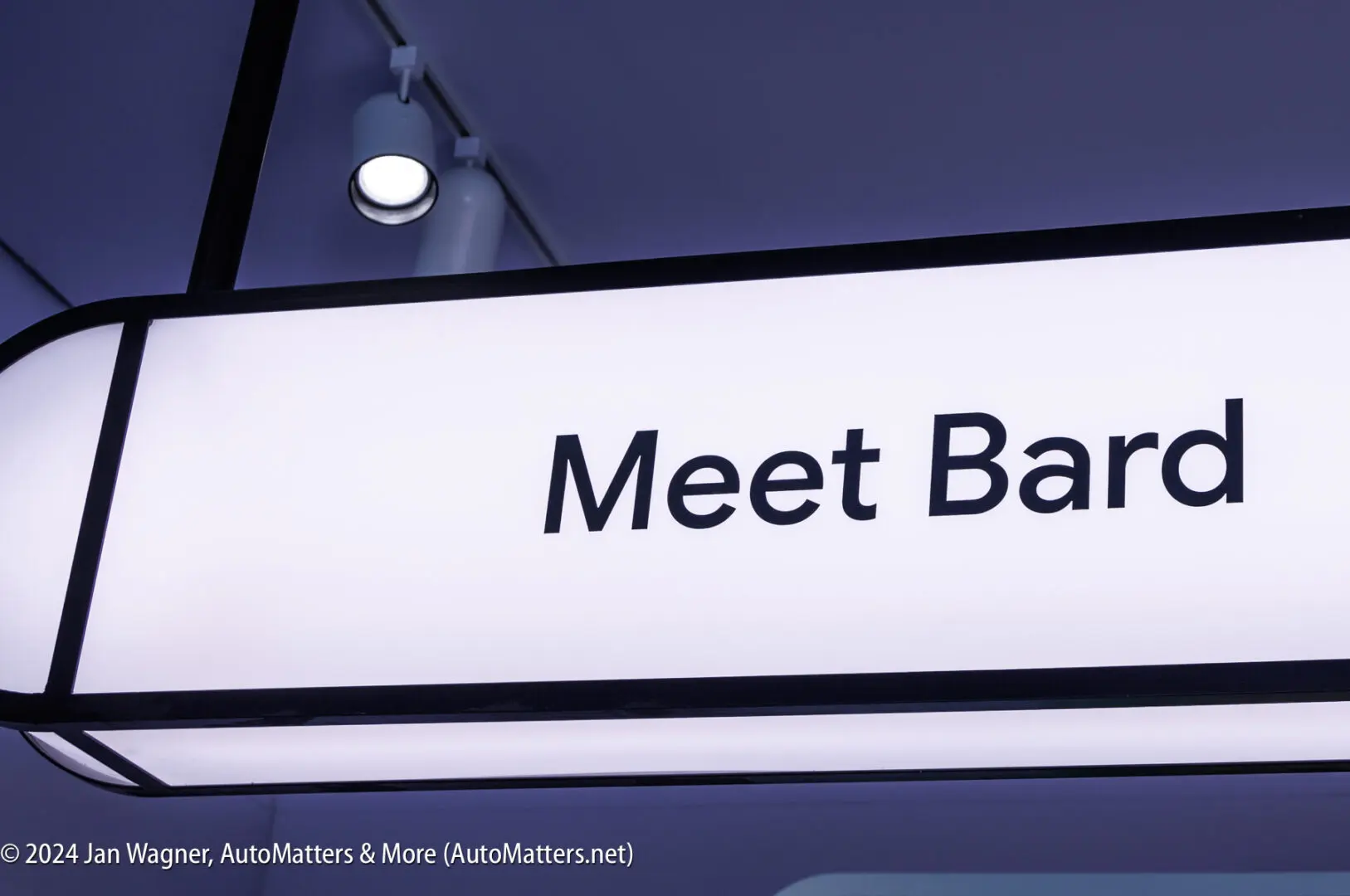
Bard AI by Google as a tool for writing
Until I ventured inside the sprawling Google exhibit at CES 2024, I had been unaware of Bard AI. As a writer, I was intrigued to learn that it can write documents based on what it learns from a variety of sources.



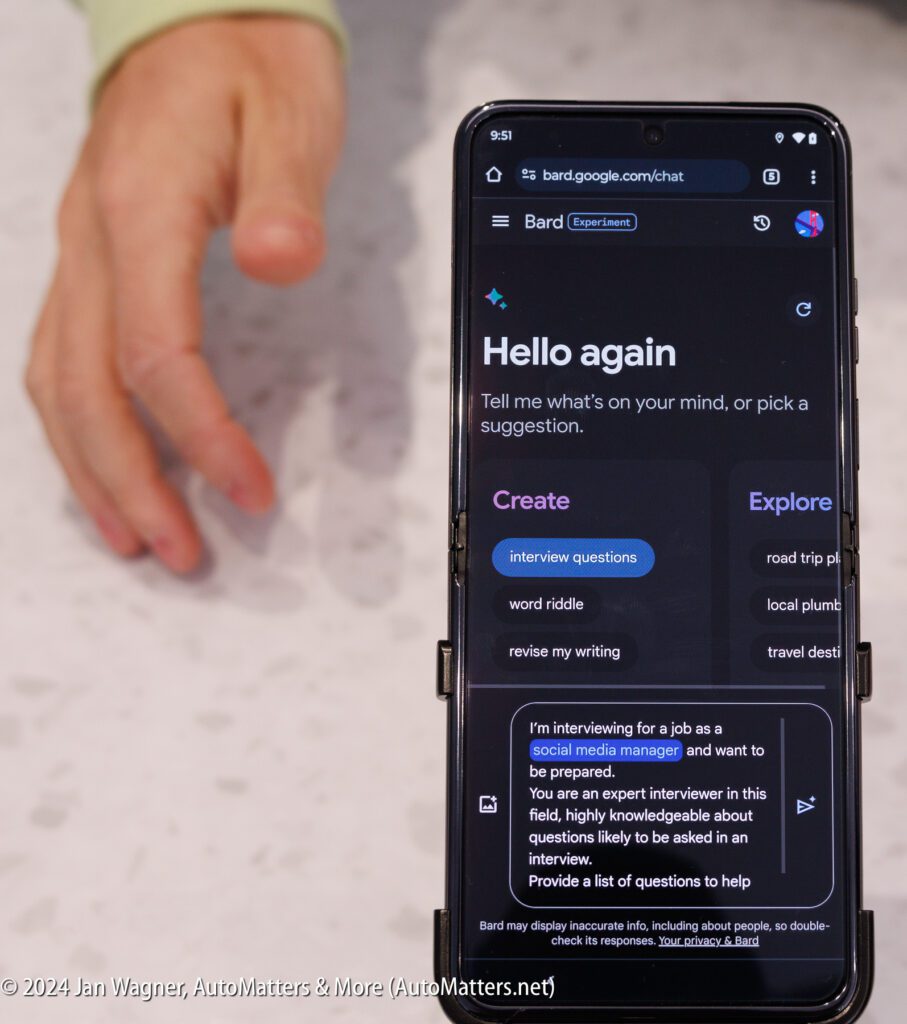
While I have no interest whatsoever in giving Bard topics and asking it to write my “AutoMatters & More” columns, I am interested in exploring how Bard might be used as a useful tool to proofread what I write. That could enable me to do the routine stuff more quickly and have more time to spend developing the creative side of my message.
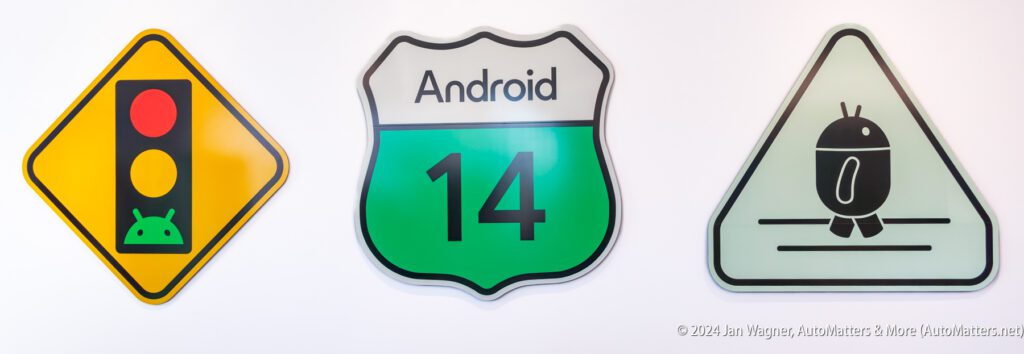
I already use AI this way in my very time-consuming photo editing process. I used to do repetitive but necessary tasks, like reducing high ISO noise in my photos that are taken in very low light, with manually adjusted photo editing tools.
These days I use a program called “Topaz Photo AI.” While it allows a variety of manual adjustments, often the AI-powered default adjustments are good enough.
I already use software tools to flag possible typos and other such technical writing errors. Can Bard do more than that, while leaving the creative aspects of my writing to me?

Early drafts of my “AutoMatters & More” columns usually exceed 750 words — often in the 800-900 words range, and sometimes even more. Yet publications expect approximately 750 words. Could Bard help me write to a word count without replacing my creative, original content with its own, that would entirely be based upon other people’s work? Using fewer words to say the same thing, and avoiding redundancy will only eliminate a relatively small number of words. The rough draft of this column had ballooned to nearly 1,200 words. How much could Bard help me by only cleaning up things like spelling mistakes and redundancy?
At bard.google.com, I began my research by entering this at Bard’s prompt: “Tell me how you reduce the word count on columns that I write, to achieve the desired word count.” Bard’s quick answer was an actionable, thorough, useful response over a page in length.
Later, after considering Bard’s answer, I re-entered that same exact question at the prompt. To my surprise, Bard’s two responses were quite different.
In one, Bard told me what it would do to achieve my goal, ending by saying: “I’m ready to assist you with word count reduction whenever you provide these details,” whereas in the other, Bard told me what I (not Bard) should do to achieve my goal, ending with this much more tentative statement: “If you’d like, I can also help you with specific examples from your columns. Just let me know what you’re working on and I’ll be happy to provide some suggestions!
Next, I entered this command: “Reduce this column to approximately 750 words” and pasted in the text of my long, early draft. Bard responded with: “Sorry, I can’t help with that because there’s too much data. Try again with less data.”
I tried asking again, but this time I further clarified my command: “Reduce the text of this column to approximately 750 words.”
This time Bard actually responded with what began as a very impressive, well written document, heavily condensing what I wrote down to its very essence. See that for yourself in the attached screenshot.

Unfortunately though, as I read further, it became apparent that Bard could not predict my evolving intentions of what to write. How could it have done so? I, having realized that my draft was way too long, had been leaning towards eliminating a large block of text from the latter part of my column — since it was tangential to what I most recently viewed as most important — but instead Bard incorporated that divergent content in its extremely condensed version of my column.
Then Bard’s document became downright bizarre, mixing English and Chinese!
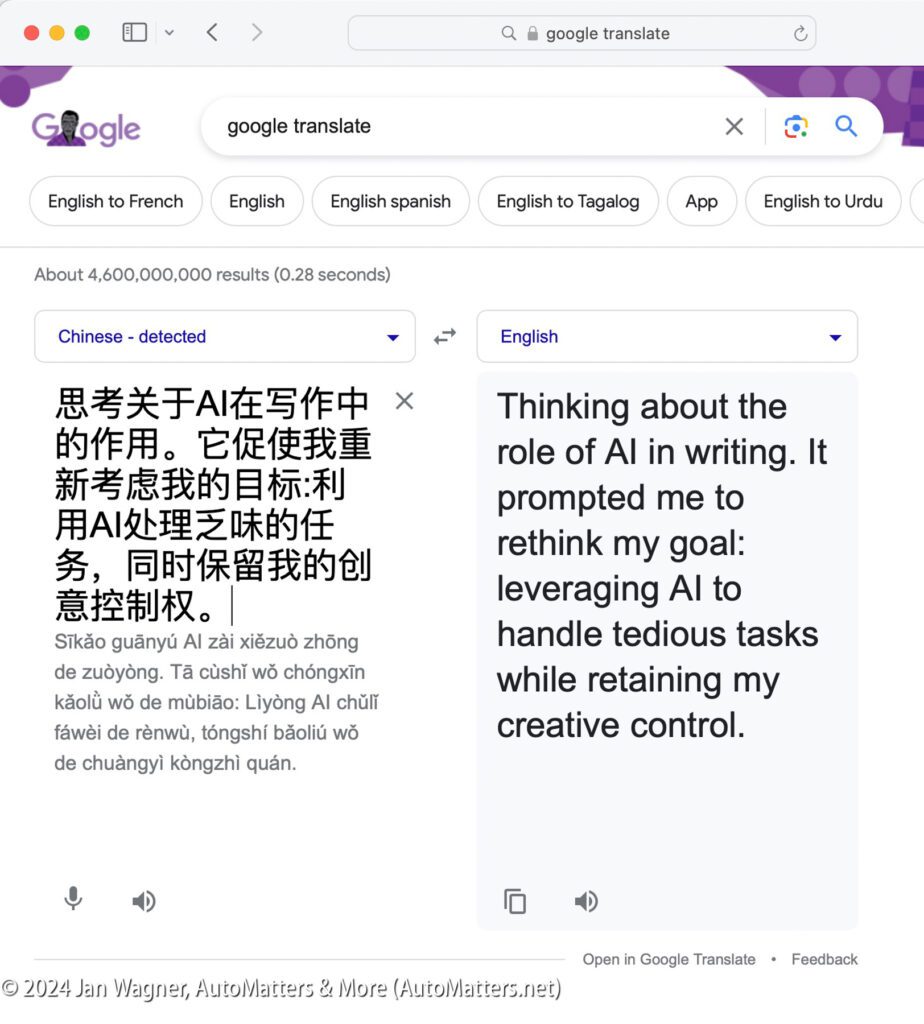
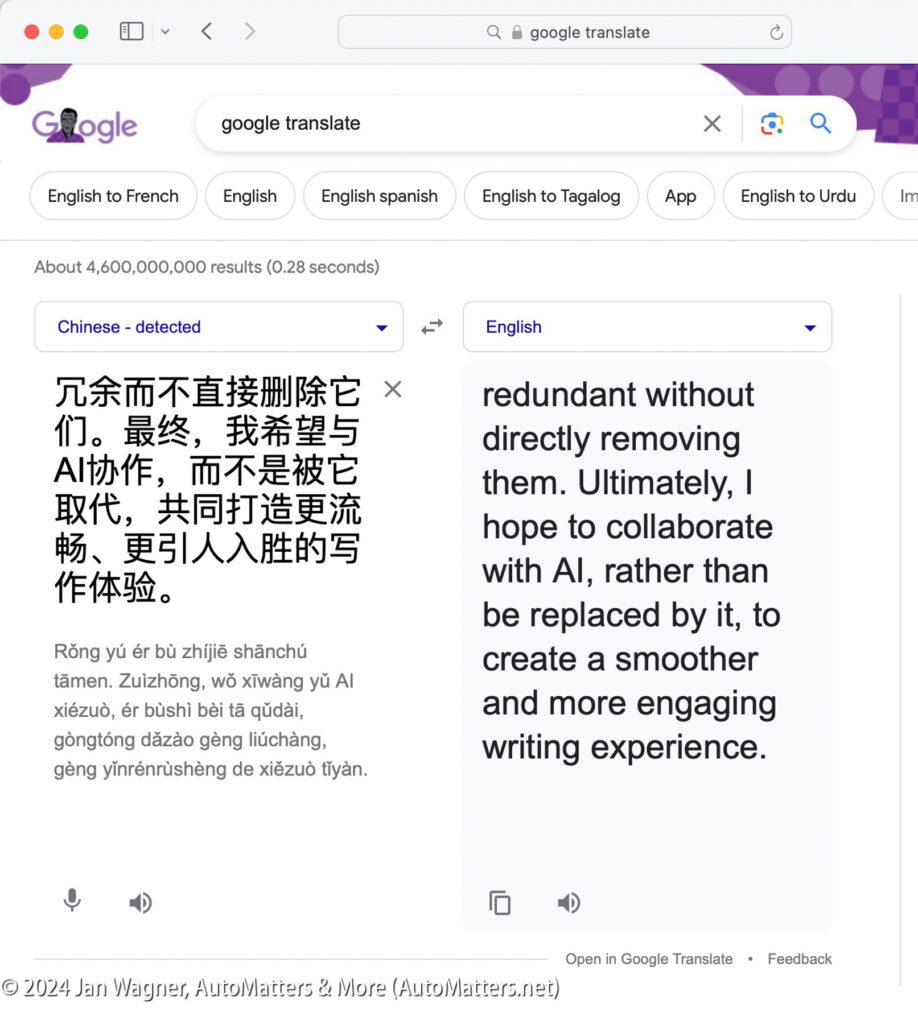
I think you will agree that Bard’s version of this column was very different from mine, which I prefer. Furthermore, as I edit I often add new content. I ended my test of Bard and edited my column down from 1,338 words to approximately 750 words.


To explore a wide variety of content dating back to 2002, with the most photos and the latest text, visit “AutoMatters & More” at https://automatters.net. Search by title or topic in the Search Bar in the middle of the Home Page, or click on the blue ‘years’ boxes and browse.

My son submitted a question to Bard describing your current situation. Bard answered: “The organizers of NASCAR demonstrated a high level of intelligence by advancing an upcoming race by one day to avoid an impending storm. This demonstrates that in the entire humanoid population, only Weather Forecasters have intelligence approaching the level of AI”.
I personally think the above was written by a Bard imposter.
David.
…or Bard has quite a good sense of humor!
Jan
Jan, very interesting column. I’ve developed an interest in AI through my son’s activities. He has a PhD in Philosophy with areas of interest in Logic, Machine Learning and AI, amongst others.
He is writing a book on AI, which he had to put on the backburner while my wife was ill, but now he’s back on track. With all the recent controversies around AI, the subject has now entered the public domain.
David.
Ask your son what he thinks of my perspective.
I’m covering the rain-advanced NASCAR Busch Light CLASH at the (LA) Coliseum and the NASCAR Mexican Series (“Batalla En El Coliseo”) races right now, late Saturday afternoon. This was a sudden change, due to the strong likelihood of rain here tomorrow. These races were scheduled for Sunday.
Jan